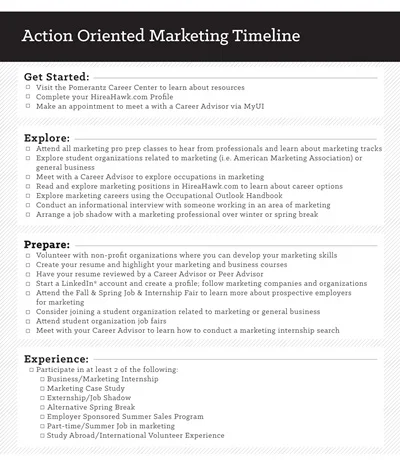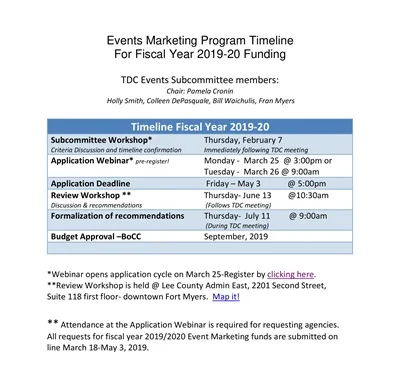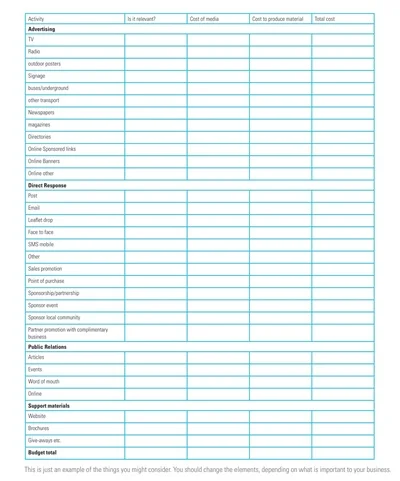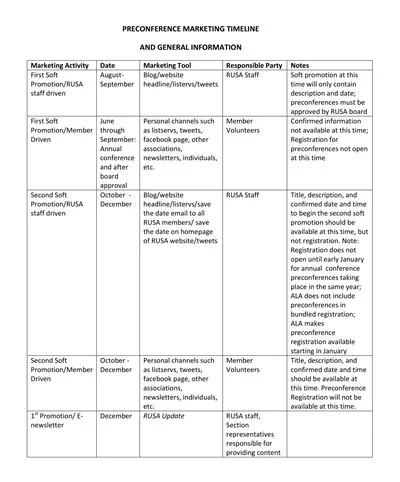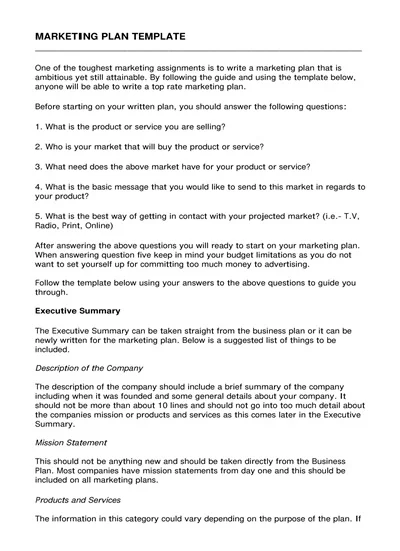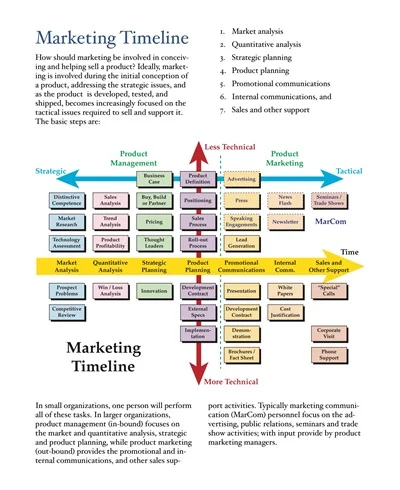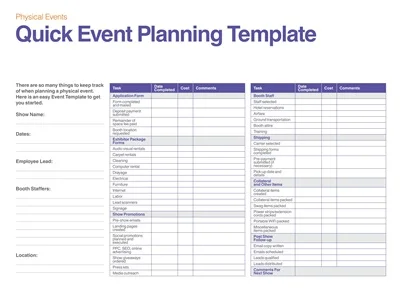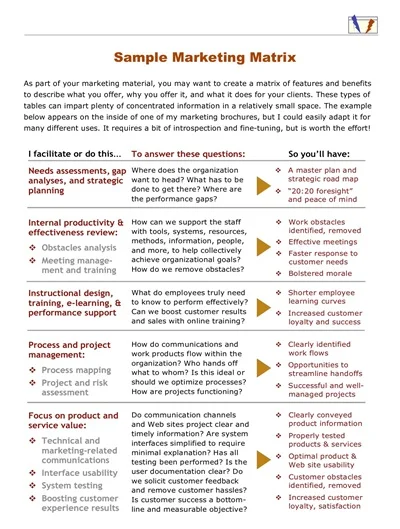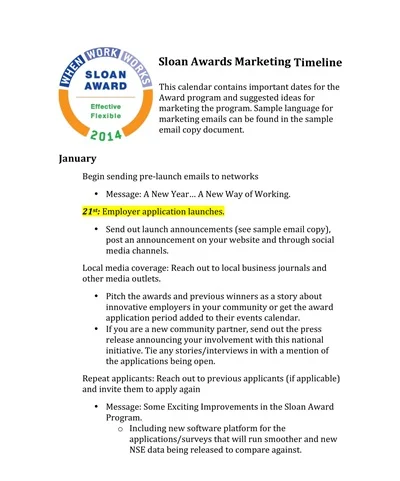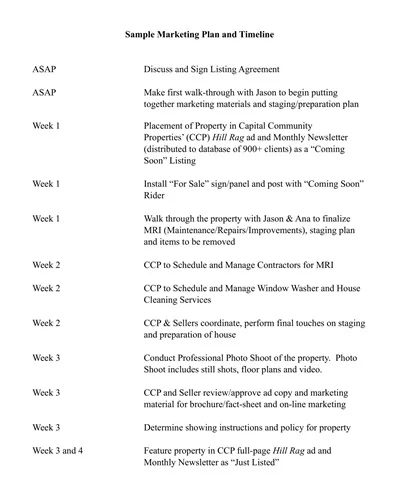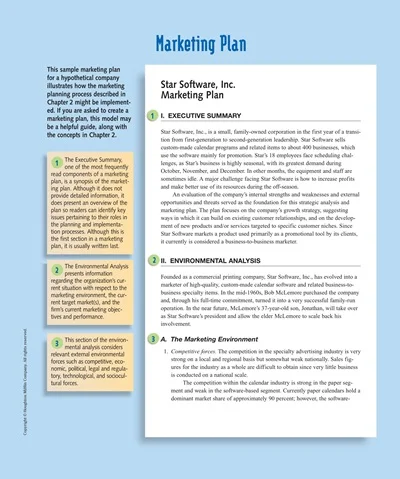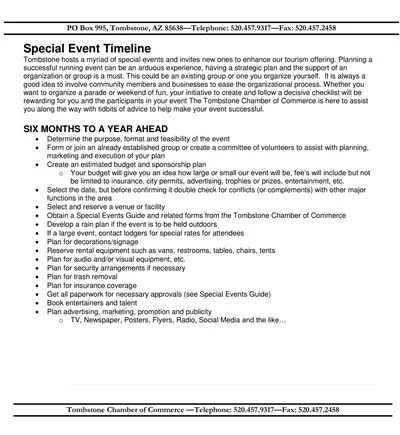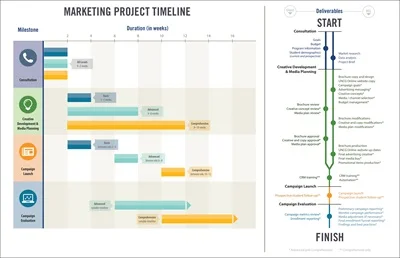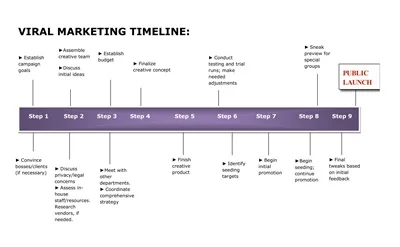26+ Free Marketing Timeline Templates – PDF
A Marketing Timeline Template is a strategic tool used by marketers and businesses to plan, organize, and track marketing campaigns and activities over a specific period. It outlines key milestones, deadlines, and tasks required to achieve marketing goals, ensuring that all efforts are coordinated and executed efficiently.
This template can be visualized in various formats, such as a calendar, Gantt chart, or spreadsheet, providing a clear overview of what needs to be done, by whom, and by when, facilitating better planning and decision-making.
Download Free Marketing Timeline Templates
What is a Marketing Timeline?
A Marketing Timeline is a strategic planning tool that outlines the specific actions, deadlines, and campaigns a business intends to execute over a set period to reach its marketing goals. It serves as a visual roadmap, helping marketers organize, prioritize, and schedule marketing activities efficiently.
This timeline ensures that all marketing efforts are aligned with the overall business objectives, facilitating a cohesive and comprehensive approach to market penetration, brand enhancement, and customer engagement.
Types of Marketing Timeline
You might think that a marketing timeline is just a simple document that outlines the different tasks and deadlines for your marketing campaign. However, several types of marketing timelines can be used depending on your specific needs and goals.
1. Traditional Timeline
The traditional timeline is the most common type of marketing timeline used by businesses. It typically includes a list of tasks or activities, along with their corresponding deadlines. This type of timeline is useful for planning and organizing the different aspects of a marketing campaign, such as content creation, social media management, and advertising.
2. Agile Timeline
The agile timeline is a more dynamic and flexible approach to creating a marketing timeline. It follows the principles of agile project management, where tasks are broken down into smaller, more manageable chunks and are completed in short periods called “sprints.” This type of timeline is great for businesses that need to quickly adapt to changes in the market or their target audience.
3. Gantt Chart Timeline
A Gantt chart is a visual representation of a project schedule that shows the start and end dates of each task, as well as their dependencies. This type of timeline is useful for tracking the progress of a marketing campaign and identifying potential delays or bottlenecks. Gantt charts can also help with resource allocation and team management.
4. Event-Based Timeline
An event-based timeline focuses on specific events or milestones that are crucial to the overall success of a marketing campaign. This type of timeline is commonly used for product launches, trade shows, or other major events that require a high level of coordination and planning.
5. Kanban Board Timeline
The Kanban board is a visual tool that helps teams manage their work by breaking tasks down into three categories: to-do, in-progress, and completed. This type of timeline is great for businesses that prefer a more visual approach to project management and want to keep track of the status of each task in real time.
6. Campaign Calendar Timeline
A campaign calendar timeline is a comprehensive view of all the marketing activities planned for a specific period, such as a quarter or year. It includes all the different types of marketing efforts, such as email campaigns, social media posts, events, and advertising. This type of timeline is useful for businesses that want to have a holistic view of their marketing strategy and ensure that all efforts are aligned and coordinated.
Key Components of a Marketing Timeline
The following are the key components that make up a marketing timeline:
- Research Phase:
- Market analysis
- Customer segmentation
- Competitor analysis
- SWOT analysis (Strengths, Weaknesses, Opportunities, Threats)
- Strategy Development:
- Setting marketing objectives
- Defining target audience
- Determining marketing channels
- Budget allocation
- Content Creation:
- Developing messaging and branding
- Designing promotional materials
- Producing digital content (videos, blogs, infographics)
- Implementation Phase:
- Campaign launch
- Social media promotion
- Email marketing campaigns
- Search Engine Optimization (SEO) strategies
- Monitoring and Adjustment:
- Tracking performance metrics (KPIs)
- Analyzing campaign effectiveness
- Making necessary adjustments for optimization
- Review and Reporting:
- Compiling final reports
- Assessing ROI
- Stakeholder briefing
- Planning for future campaigns
- Ongoing Maintenance:
- Maintaining brand consistency
- Regularly updating social media and website content
- Continuously analyzing market trends and competition
- Adapting strategies accordingly
How to Use a Marketing Timeline
A marketing timeline is an essential tool that outlines your marketing strategy’s key dates and milestones. It provides a visual representation of your planned marketing activities over a certain period, helping you to organize, prioritize, and track progress toward your marketing goals.
Here’s how to effectively use a marketing timeline:
Set Clear Objectives
Determine what you want to achieve with your marketing efforts, such as increasing brand awareness, generating leads, or boosting sales. Identify measurable goals aligned with these objectives.
Identify Key Milestones
Break down your objectives into key milestones. These could include product launches, marketing campaigns, or important events. Assign a specific timeframe to each milestone to ensure progress can be measured.
Choose Your Tools
Select a tool or software for creating your marketing timeline. Options range from simple spreadsheet applications to more complex project management tools that allow for collaborative editing and integration with other software.
Map Out Activities
List all the marketing activities required to achieve your milestones. This could include content creation, ad buys, social media campaigns, and more. Assign each activity a start date, end date, and responsible party.
Allocate Resources
Determine the resources required for each activity in terms of budget, personnel, and technology. This will help you identify any potential resource constraints early on.
Monitor and Adjust
Regularly review your marketing timeline to monitor progress against your objectives. Be prepared to make adjustments to activities, timelines, or resources as needed to stay on track.
Why You Need a Marketing Timeline
Creating a marketing timeline is crucial for effective planning, execution, and evaluation of marketing strategies. Here are some reasons why you need a marketing timeline:
- Strategic Planning: A marketing timeline helps you map out your marketing activities over a specific period, such as weeks, months, or quarters. It allows you to align your marketing efforts with your overall business goals and objectives.
- Resource Allocation: By laying out your marketing activities on a timeline, you can better allocate resources such as budget, manpower, and tools. This ensures that you have the necessary resources available when needed and helps prevent overstretching or underutilization of resources.
- Coordination and Collaboration: A marketing timeline serves as a central reference point for your marketing team. It facilitates coordination and collaboration among team members by providing visibility into upcoming tasks, deadlines, and dependencies. This reduces the likelihood of misunderstandings or missed opportunities.
- Deadline Management: With a marketing timeline, you can set clear deadlines for each marketing activity or campaign. This helps keep your team focused and accountable, ensuring that tasks are completed on time and within budget.
- Campaign Sequencing: Sequencing your marketing campaigns on a timeline allows you to plan and execute them in a logical order. For example, you can schedule awareness-building campaigns before product launches or follow-up campaigns after lead-generation efforts.
- Risk Mitigation: A marketing timeline enables you to identify potential bottlenecks, conflicts, or gaps in your marketing strategy. By proactively addressing these issues, you can minimize risks and optimize the success of your marketing initiatives.
- Performance Tracking: By tracking the progress of your marketing activities against the timeline, you can measure their effectiveness and identify areas for improvement. This allows you to make data-driven decisions and refine your marketing strategy over time.
- Client Communication: If you’re working with clients or stakeholders, a marketing timeline provides a clear overview of your planned activities and progress. It fosters transparency and trust by keeping them informed and involved in the marketing process.
Common Mistakes to Avoid When Using a Marketing Timeline
In the dynamic world of marketing, a well-structured marketing timeline can be the backbone of any successful campaign. It helps teams stay organized, tracks progress against goals, and ensures that key milestones are met. However, even with the best intentions, there are common pitfalls that can derail your marketing timeline’s effectiveness. Identifying these mistakes early on can save you time, resources, and a lot of headaches.
Here are some of the most common mistakes to avoid when using a marketing timeline.
1. Underestimating the Time Needed for Tasks
One of the most frequent errors in creating marketing timelines is underestimating how long tasks will take. This optimism bias can lead to rushed work, missed deadlines, and unnecessary stress for your team.
Solution: Utilize historical data from previous projects to inform your estimates. If this is your first project of a particular kind, add buffer time to your estimates to account for unforeseen delays.
2. Overlooking the Importance of Flexibility
While it’s crucial to stick to a timeline, rigidity can be detrimental. Market conditions change, unexpected challenges arise, and opportunities present themselves. A marketing timeline should be a living document that can adapt to these changes.
Solution: Build checkpoints into your timeline where you can assess progress and make necessary adjustments. This approach ensures that your timeline remains relevant and aligned with your objectives.
3. Failing to Assign Clear Responsibilities
A timeline is only as effective as the team working on it. Failing to assign clear responsibilities can lead to confusion about who is doing what, resulting in tasks falling through the cracks.
Solution: Clearly define roles and responsibilities for each task on your timeline. Make sure everyone involved knows what they are accountable for and the deadlines they need to meet.
4. Not Communicating with Stakeholders
Stakeholders, whether they are team members, management, or clients, need to be kept in the loop. Lack of communication can lead to misaligned expectations and dissatisfaction.
Solution: Regularly update all stakeholders on the progress of the project. This includes not just successes but also any challenges or changes to the timeline. Effective communication ensures everyone is on the same page.
5. Ignoring the Need for a Contingency Plan
No matter how well you plan, something can always go wrong. Not having a contingency plan for potential risks is a common oversight that can jeopardize your project.
Solution: Identify potential risks at the start of your project and develop a contingency plan for each. Knowing how you’ll address problems if they arise can help you quickly pivot and keep your project on track.
6. Neglecting the Review and Reflection Process
Once a project is completed, it’s tempting to move straight on to the next one. However, skipping the review and reflection process means missing out on valuable lessons that could improve future timelines.
Solution: Conduct a post-project review with your team. Discuss what worked well, what didn’t, and how processes can be improved. This reflective practice is invaluable for ongoing improvement.
How to Create a Marketing Timeline Template
Here’s how you can create a marketing timeline template that streamlines your planning process and keeps your campaigns running smoothly.
- Define Your Marketing Goals: Before you jump into creating a timeline, it’s essential to clearly define your marketing goals. What do you aim to achieve with your marketing campaign? Whether it’s increasing brand awareness, driving traffic to your website, or boosting sales, having clear objectives will guide the structure of your timeline and help you measure success.
- Identify Key Milestones and Tasks: Break down your marketing campaign into key milestones and tasks. Milestones mark significant stages in your campaign, such as the launch of a product or the start of an ad campaign. Tasks are the individual efforts needed to reach these milestones. For example, if a milestone is launching a new product, tasks might include market research, product design, and creating promotional materials.
- Assign Responsibilities: Once you’ve listed the tasks, assign each one to a team member. Clearly defining who is responsible for what ensures accountability and helps prevent tasks from falling through the cracks. It also allows team members to manage their time more effectively and collaborate more efficiently.
- Set Deadlines: For each task and milestone, set realistic deadlines. Consider the complexity of each task, dependencies between tasks, and your overall campaign goals when determining these timeframes. Deadlines keep your project on schedule and motivate your team to maintain progress.
- Choose the Right Tools: Select a tool or software that fits your needs for creating and managing your marketing timeline. There are many options available, ranging from simple spreadsheet applications like Microsoft Excel and Google Sheets to more sophisticated project management tools like Trello, Asana, and Monday.com. These tools offer features like Gantt charts, calendars, and collaboration capabilities, helping you visualize your timeline and keep your team aligned.
- Create Your Timeline: Using your chosen tool, start plotting your marketing timeline. Input your milestones and tasks, assign them to the responsible team members, and set their deadlines. If you’re using project management software, take advantage of features like color coding and tags to categorize tasks by team, phase, or priority level.
- Monitor and Update Regularly: Your marketing timeline is a living document. Regularly review and update it to reflect any changes in your campaign strategy, task completion status, or deadlines. This ensures your timeline remains an accurate and effective planning tool throughout your campaign.
- Review and Learn: After your marketing campaign concludes, review the timeline and overall campaign performance. What went well? What challenges did you encounter? Use these insights to refine your process for future marketing efforts, making your next timeline even more effective.

